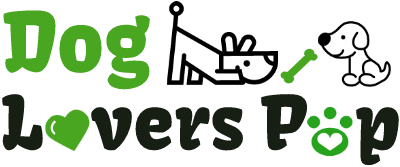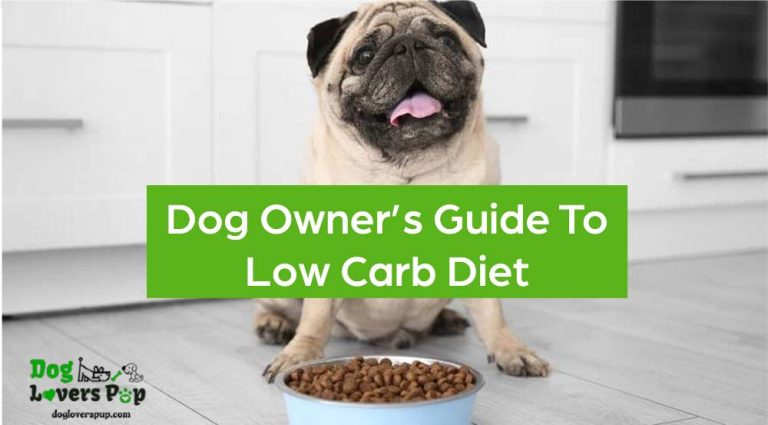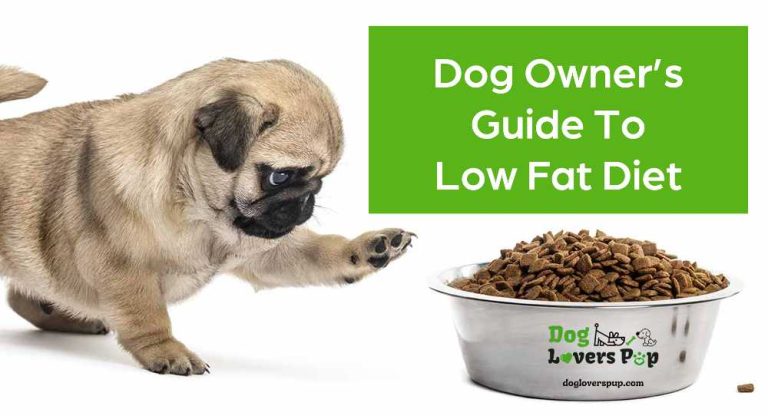Everything About Dog Food & Nutrition
A dog’s diet is very important for its overall health and well-being. Are you a dog owner who is looking for information on the best way about feeding your dog and provide them with the nutrients they need?
You’ve come to the right place! In this blog post, we will discuss everything you need to know about feeding your dog and providing them with the proper nutrition. We will cover topics such as the different types of dog food available, how to read dog food labels, what ingredients to look for in a good quality dog food, which foods are harmful to dogs, when to start feeding them solid foods, how much to feed your dog, the benefits of a healthy diet, and more!
We will also discuss the pros and cons of feeding your dog a raw diet, provide tips on how to choose the right food for your dog’s individual needs, when to switch foods, how to transition to a new diet, as well as answer some common questions about dogs and diet/food.
So whether you’re a first-time dog owner or just looking for more information on canine nutrition, read on for helpful tips and advice so that you’ll be an expert on canine care to keep your beloved dog happy and healthy!
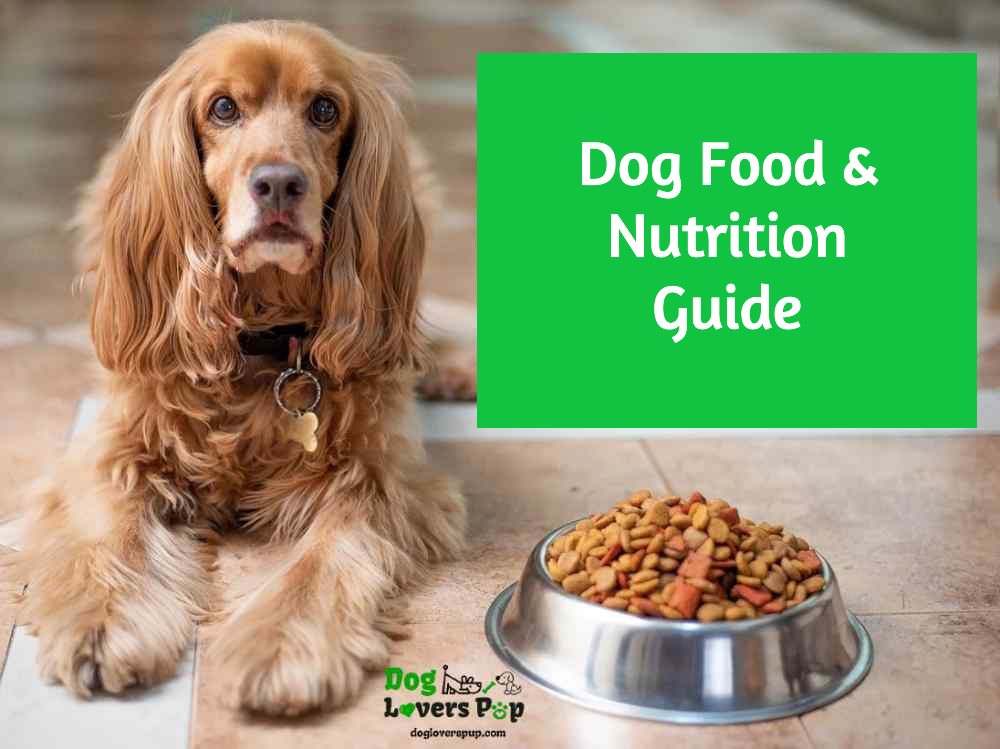
Table of Contents
Types of Dog Food Available
There are a variety of different types of dog food available on the market today, and it can be confusing to know which one is best for your pup. The most common types of commercial dog foods include kibble, canned food, dehydrated food, and freeze-dried food.
Kibble is the most popular type of food and is made up of dry, ground-up pieces of kibble. Dogs that eat dry kibble tend to have cleaner teeth and less plaque build-up than those that eat wet food.
Wet food is also a popular choice and typically contains chunks or slices of meat in gravy or sauce. There are a few key benefits to feeding your dog wet canned food instead of kibble. Wet food is more palatable to dogs, so they’re more likely to eat it. It’s also higher in moisture content, which can help keep your dog hydrated and healthy. And finally, wet food contains fewer processed ingredients than kibble does.
Raw dog food is gaining popularity among dog owners who believe it’s more natural than processed kibble or wet food. You can feed your dogs raw food as the only type of diet, or mix it in with dry or wet food.
There are three types of raw diet options you can choose from:
- Raw frozen dog food. It consists of fresh, unprocessed meat and organs. The food is flash-frozen immediately after being butchered which helps to preserve the nutrients and enzymes.
- Freeze-dried raw food is popular among dog parents that want a minimally processed diet for their dogs. During the freeze-drying process, food ingredients transition from raw to freeze-dried using a low temperature and low pressure to remove the water which helps to preserve the nutrients and enzymes your dog needs. A freeze-dried diet is very nutrient-rich and can be a great option for dogs with allergies or sensitivities to other types of food.
- Dehydrated dog food typically comes in a lightweight food blend that only requires adding water to create your pup’s next delicious meal. Dehydrated dog food is made by taking real-food ingredients and gently cooking them using a low-heat to remove moisture. This dehydrating process helps to retain essential nutrients, vitamins, and minerals found naturally in the ingredients, and increase shelf-life.
All of these types of commercial dog foods have their pros and cons, so it’s important to do your research on each type and decide which one is best for your individual pup.
Kibble is more affordable than wet food. However, wet canned dog food contains fewer processed ingredients than kibble does. Dehydrated and freeze-dried foods are both nutrient-rich but they can be more expensive than dry kibbles.
When choosing a dog food, it is important to consider your dog’s individual needs. Some dogs may need a diet that is high in protein, while others may need a diet that is low in fat. Some dogs may be allergic to certain ingredients, while others may have a sensitive stomach. It is important to find food that meets your dog’s specific needs and helps them to stay healthy and happy.
The Pros and Cons of Feeding Dogs a Raw Diet
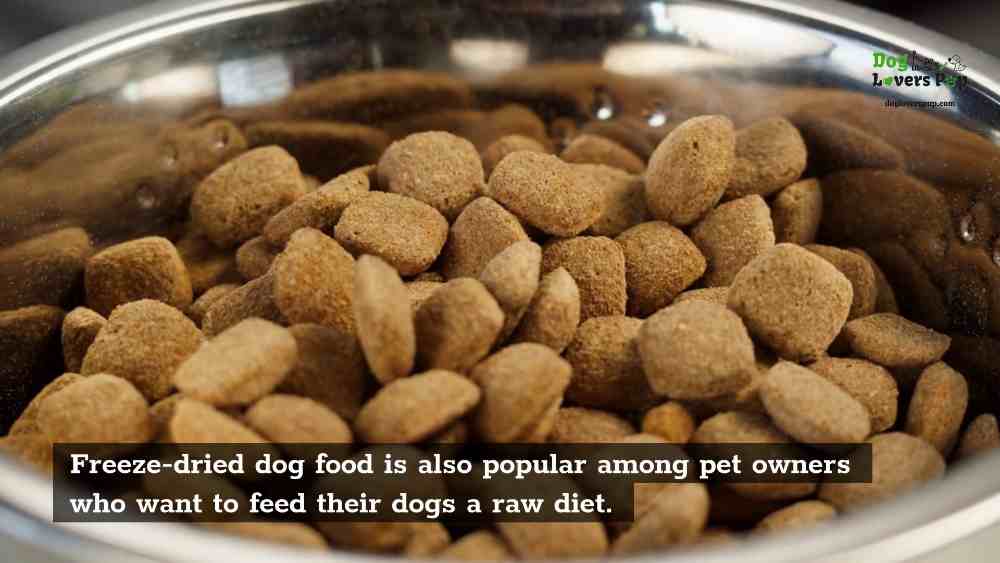
There are pros and cons to feeding your dog a raw diet. On the one hand, a raw diet can be healthier for your dog than processed foods. It can help to improve their digestion, coat condition, and energy levels.
On the other hand, feeding your dog a raw diet can be more expensive than kibbles, depending on the brand you buy. Dehydrated raw dog food can also be more time-consuming as you need to rehydrate it before feeding it to your dog.
Reading Dog Food Labels
When you’re looking to buy a new bag of dog food, it’s important that you know how to read the label so that you can make sure that the food meets your pup’s nutritional needs.
The first thing to look for on a dog food label is the name of the food. This will tell you what type of food it is (e.g., kibble, canned food, etc.). The next thing to look for is the guaranteed analysis, which will list the percentages of protein, fat, moisture, and carbohydrates in the food. The ingredients list will tell you what’s in the food and where it comes from.
Look for a dog food that has a high-quality protein source as the first ingredient, such as chicken, beef, lamb, or fish. Avoid foods that have unhealthy additives, including sugar, salt, artificial flavors and colors, and chemical preservatives.
Ingredients to Look for in a Good Quality Dog Food
When you’re looking for good quality dog food, there are a few ingredients that you should look for. The first is animal-based protein, which is essential for building and maintaining muscle mass. Good sources of animal-based protein include chicken, beef, lamb, fish, and eggs.
The second ingredient to look for is healthy fats, such as omega fatty acids. Fat is important for providing energy and helping your dog to absorb essential vitamins and minerals.
The third ingredient to look for is fiber, which helps with digestion and stool formation. Good sources of fiber include fruits, vegetables, and whole grains.
Foods To Avoid That Are Harmful To Dogs
There are a number of foods that are harmful to dogs and can cause serious health problems.
Chocolate, caffeine, and alcohol are all harmful to dogs and should be avoided. Grapes and raisins can also cause liver damage in dogs, so they should not be given either.
Xylitol, a sugar substitute found in many types of chewing gum and other products, is toxic to dogs and can cause liver failure. And finally, onions and garlic can cause anaemia in dogs, so they should be avoided as well.
When to Start Feeding Dogs Solid Foods
The age at which you start feeding your dog solid foods depends on their breed and size. Smaller breeds puppy can typically start eating solid foods at around six weeks of age, while larger breeds puppy may not be ready until they are eight or nine weeks old. You can start by feeding your dog a small amount of wet food and gradually increasing the amount as they get older.
How Much to Feed Dogs
Dogs should eat one or two meals per day, and the amount of food that you should feed your dog will vary depending on their size and age. Smaller breeds can go longer without food, while larger dogs need to eat more regularly to avoid obesity or malnutrition.
Refer to the feeding guide shown on the dog food bag which is usually presented as a table shown below:
A good rule of thumb to follow when feeding my dog is never to feed your pooch until he is so hungry that he would eat anything in his bowl, and always put his food away after 15 minutes of being fed to prevent overeating. If you are not sure if you are feeding your dog the right amount, it is important to consult with your veterinarian. They can help you create a diet plan that will help your dog reach their ideal weight.
The Importance & Benefits of a Healthy Diet
Dogs need a balanced diet just like humans do. A healthy diet is essential for dogs of all ages. It can help to prevent health problems, maintain a healthy weight, and improve overall vitality. A good diet consists of high-quality protein, healthy fats, fiber, and essential vitamins and minerals.
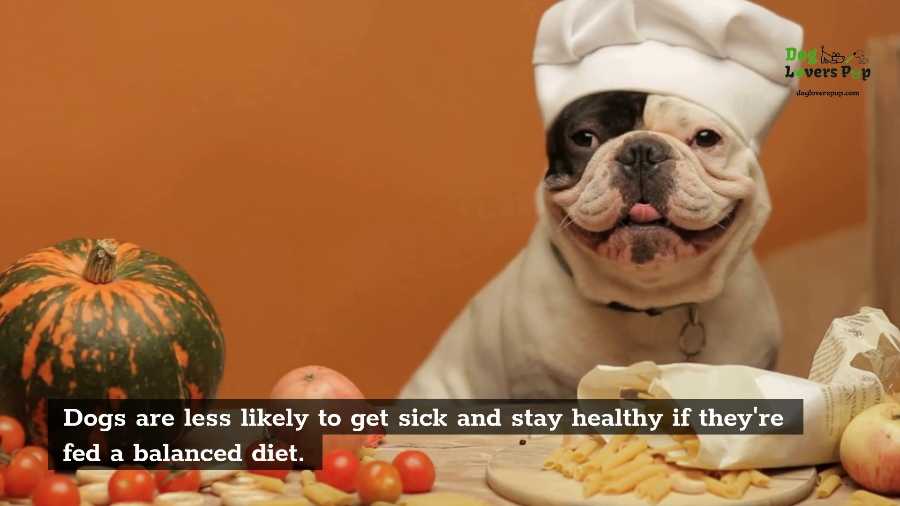
Tips For Choosing the Right Dog Food for Your Dog's Individual Needs
When it comes to choosing the right diet for your beloved pup, there are a lot of factors to consider! From their individual health needs to their age and breed, to their weight and activity level.
Some dogs may need a diet that is high in protein, while others may need a diet that is low in fat. Some dogs may be allergic to certain ingredients, while others may have a sensitive stomach – it can be tricky trying to find the right diet for your dog.
It is important to find food that meets your dog’s specific needs and helps them to stay healthy and happy. With a little bit of research and guidance from your veterinarian, you can find the perfect food to keep your furry friend happy and healthy for years to come!
Types of Special Diet That Your Dog May Require
There are a number of different types of special diet dog food available on the market, each designed to meet the specific needs of dogs with a particular health condition or dietary requirement.
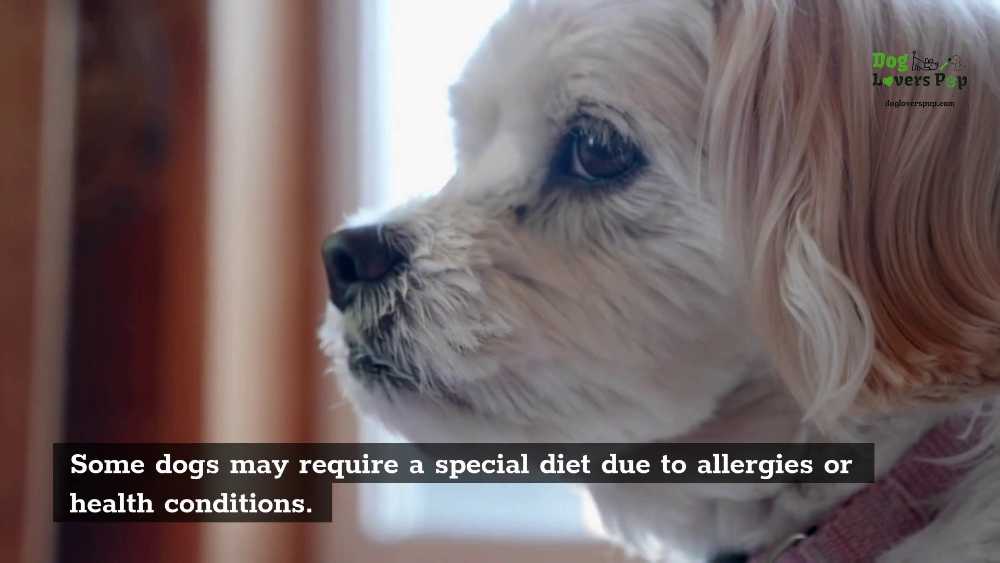
So, it is important to consult with your veterinarian to determine which type of food is best for your dog.
Here are some of the common types of special diet dog food & why your dog may need them:
Urinary dog food:
Dogs with urinary problems may need a diet that is low in sodium and high in potassium. Urinary dog food can help to keep the bladder healthy and prevent urinary tract infections.
Diabetic dog food:
Diabetic dogs require a special diet that is low in sugar and carbohydrates. Diabetic dog food can help to keep blood sugar levels stable and prevent diabetic ketoacidosis.
Kidney disorder dog food:
Dogs with kidney disorders need a diet that is low in protein and phosphorus. Kidney disorder dog food can help to protect the kidneys from further damage.
Digestive care dog food:
Dogs with digestive problems may need a diet that is high in fiber and low in fat. Digestive care dog food can help to improve digestion and prevent constipation.
Sensitive stomach dog food:
Dogs with sensitive stomachs may benefit from a diet that is free from grains, chicken, and other common allergens. Sensitive stomach dog food can help to prevent digestive problems.
Arthritis dog food:
Dogs with arthritis may need a diet that is high in omega- acids and glucosamine. Arthritis dog food can help to reduce inflammation and pain.
Allergies & itchy skin dog food:
Dogs with allergies or itchy skin may benefit from a diet that is free from grains, dairy, and other common allergens. Allergy & itchy skin dog food can help to relieve symptoms of allergies and itchiness.
Hydrolyzed protein dog food:
Dogs with food allergies may benefit from a hydrolyzed protein diet. Hydrolyzed protein dog food is broken down into very small pieces, which makes it less likely to cause an allergic reaction.
Limited ingredient dog food:
Dogs with food allergies or sensitivities may benefit from a diet that is made with limited ingredients. Limited ingredient dog food typically contains just a handful of carefully selected ingredients, which reduces the chances of triggering an allergy.
Hypoallergenic dog food:
Dogs with severe allergies may benefit from a diet that is made with hypoallergenic ingredients. Hypoallergenic dog food is free from common allergens, such as grains, dairy, and chicken.
Sport dog food:
Dogs that participate in sporting activities may need a diet that is high in protein and low in fat. Sport dog food can help to provide the energy they need to perform at their best.
Performance dog food:
Performance dog food is a specially-formulated diet that is designed to meet the needs of active dogs. It is high in protein and calories, which can help to build muscle mass and provide energy. Dogs that participate in performance events may need a diet that is high in protein and carbohydrates. Performance dog food can help to improve stamina and endurance.
Vet recommended dog food:
Many veterinarians recommend a diet that is high in fiber and low in fat for dogs with obesity or weight problems. Vet recommended dog food can help to promote weight loss and improve overall health.
High fiber diet:
Dogs with constipation or other digestive problems may benefit from a high fiber diet. High fiber diet dog food can help to improve digestion and prevent constipation.
High protein diet:
Dogs that are active or have a high metabolism may benefit from a diet that is high in protein. High protein diet dog food can help to build muscle mass and provide energy.
Low carb diet:
Dogs with diabetes or obesity may benefit from a low carb diet. Low carb dog food is low in sugar and carbohydrates, which can help to control blood sugar levels and promote weight loss.
Low-fat dog food:
Dogs that are overweight or dogs with health conditions like pancreatitis, high blood pressure, and other heart problems may require a low-fat diet. To learn more about the benefits of low fat diet, read our Dog Owner’s Guide to Low Fat Diet.
Low protein diet:
Dogs with liver disease or other health problems may benefit from a low protein diet. Low protein diet dog food helps to protect the liver and prevent further damage.
Low sodium diet:
Dogs with heart disease, kidney disease, or other health problems may benefit from a low sodium diet. Low sodium diet dog food helps to reduce the risk of health problems caused by high blood pressure.
Dog food for obese dogs:
Dog owners who are struggling to help their dogs to lose weight may want to consider feeding them a diet that is made with low-fat ingredients. Dog food for obese dogs can help to promote weight loss and improve overall health.
Dog food for weight gain:
Dogs that are underweight may benefit from a diet that is high in calories and protein. Dog food for weight gain can help to increase muscle mass and improve overall health.
Grain-free dog food:
Dogs with digestive problems or allergies may benefit from a grain-free diet. Grain-free diet dog food is free from common allergens, such as grains and dairy.
Chicken-free dog food:
Dogs with allergies or sensitivities to chicken may benefit from a diet that is made with chicken-free ingredients. Chicken-free dog food is free from the most common allergen in pet food.
As you can see, there are a variety of special dog foods available to meet the needs of individual dogs. If you are concerned about your dog’s health, it is important to discuss their dietary needs with your veterinarian. They can help you select the best food for your pup’s unique needs.
Tips for Transitioning Your Dog to A New Diet
- Start by gradually adding small amounts of the new food to your dog’s old food. This will help their digestive system adjust to the new diet.
- If your dog is resistant to the new food, try mixing it with their old food until they are used to the taste.
- Be patient! It may take a few days or weeks for your dog to adjust to its new diet.
- If your dog has any digestive problems after switching to a new food, consult your veterinarian. They may need to switch to a different diet altogether.
Transitioning your dog to a new diet can be a challenging but rewarding experience. By following these tips, you can help your dog make a smooth transition to its new diet. And remember, if you have any questions or concerns, don’t hesitate to consult your veterinarian.
When Should You Switch to Senior Dog Food?
Most dogs can start eating senior dog food around age seven or eight. Check with your veterinarian to see if he recommends switching sooner based on your dog’s health and weight.
Just like with adult dog food, start by mixing a small amount of senior food into your dog’s current diet. Gradually increase the proportion of senior food over time. By the time your dog is eating only senior food, he should be fully transitioned to his new diet.
Dog Foods and Nutritional Needs FAQs
Below are some common questions that people have about dogs and their diets.
What is the best time of day to feed my dog?
You can let your pooch eat his food whenever he is most active and burn off more calories during the day. However, many dogs do well with an early morning meal because it helps regulate their metabolism for the rest of the day.
What are the benefits of feeding my dog high-protein food?
High-protein diets keep your pup’s weight under control and support lean muscle growth. It can also improve coat health and energy levels.
What can I feed my dog on a low-carb diet?
Dogs do not need carbohydrates in their food because they are able to get all of their nutritional needs from protein and fat. Here’s what you should give your pup:
A balanced, high-quality protein source that has an adequate amount of amino acids that dogs require in their diet, like meat (chicken, beef, lamb) and eggs.
Fatty fish like salmon with high levels of omega-3 fatty acids. Chicken fat is also a good choice as it provides more than four times the amount of energy as carbohydrates.
What is a high-fiber diet for dogs?
A high-fiber diet for dogs is a diet that is high in healthy plant-based fibers. It can help to improve digestion and prevent constipation.
Can I give my dog human food?
There are a number of human foods that are safe for dogs to eat, including cooked chicken, rice, and vegetables. However, it is important to avoid giving your dog any food that is high in sugar, salt, or unhealthy fats.
Is it safe to change my dog’s diet on my own?
Changing your dog’s diet can be risky, so it is always best to consult with your veterinarian before making any changes. They can help you select a food that is best suited for your pup’s unique nutritional needs.
How can I tell if my dog is overweight or obese?
Overweight and obese dogs are at risk for a number of health problems, including diabetes, heart disease, and arthritis. You can tell if your dog is overweight by checking its body condition score. A healthy dog should have a score of between four and six out of nine. If your dog’s score is higher than six, they may be overweight and should see a veterinarian for advice on how to lose weight.
My dog doesn’t like the new food, what do I do?
If your dog doesn’t like their new food, you can try mixing it with their old food until they are used to the taste. Be patient, it may take a few days or weeks for them to adjust.
What is a low carb diet for dogs?
A low carb diet for dogs is a diet that is designed to help control blood sugar levels and treat diabetes. It is high in protein and fiber, and low in carbohydrates. To learn more about this diet, read our complete guide to low-carb dog diets.
My dog has diabetes, can he still eat dog food?
Yes, dogs with diabetes can still eat dog food. However, it is important to consult with your veterinarian before making any changes to their diet. They may need to switch to a food that is specifically designed for diabetic dogs.
Is grain-free dog food better for my dog?
Grain-free dog food is a popular choice among pet owners, as it is thought to be more digestible than foods that contain grains. However, there is no scientific evidence to support this claim.
Are chicken free diets good for dogs?
Chicken free diets are a good option for dogs who are allergic to chicken or other poultry. However, it is important to make sure that the diet is nutritionally complete and balanced.
How do I know if my dog needs a special diet?
If your dog has any health problems, such as obesity, diabetes, heart disease, or arthritis, they may need a special diet. Consult with your veterinarian to see if they would benefit from a diet that is specifically designed for their condition.
How can you tell if your dog is overweight or underweight, and what changes to make in his diet?
It can be difficult to determine whether a dog is overweight or underweight without professional help. If you are concerned that your pup may be too heavy or too thin, it is important to consult with your veterinarian. They can help you create a diet plan that will help your dog reach their ideal weight.
What are some popular commercial dog food brands on the market?
There are many different types of commercial dog food available on the market. Some of the best dog food brands include Purina, Beneful, Blue Buffalo, and Hill’s Science Diet.
Should I be making my own dog food at home instead of buying it pre-made?
It is possible to make your own dog food at home, but it is important to ensure that the recipes are nutritionally balanced. There are many different recipes for homemade dog food available online, but it is important to consult with a veterinarian before making any changes to your pup’s diet.
Should I give my dog table scraps, and if so, which ones are safe to give them?
It is okay to give your dog table scraps occasionally, but it is important to be aware of which foods are safe for dogs. Some safe table scraps include cooked meat, fruits, and vegetables. It is important to avoid giving your dog foods that are high in sugar or salt, as these can be harmful to their health.
What should I feed my dog to ensure they’re getting the right nutrients?
The best way to ensure that your dog is getting the right nutrients is to feed them a diet that is made with balanced ingredients. There are many different types of dog food available that are specifically designed to meet the nutritional needs of dogs.
What are some common health problems that can arise from poor diet & nutrition in dogs?
Some common health problems that can arise from poor diet and nutrition in dogs include obesity, heart disease, kidney disease, and liver disease. It is important to ensure that your dog’s diet is balanced and meets their nutritional needs in order to help prevent these health problems from developing.
I have a senior dog, do they need a special diet?
Yes, senior dogs do need special food. As our dogs age, their nutritional needs change and they may require a diet that is made specifically for seniors. There are many different types of senior dog food available on the market, so it is important to consult with your veterinarian to find the best food for your pup.
What is considered a balanced diet for dogs?
A balanced diet for dogs includes a variety of different types of food, including protein, fiber, carbohydrates, and healthy fats. It is important to ensure that your dog’s diet is balanced in order to meet its nutritional needs.
How often should my dog eat and how much should they eat at a time?
Dogs should eat one or two meals per day, and the amount of food that you should feed your dog depends on their size, age, and activity level.
What benefits does a raw diet have over other types of diets?
A raw diet has many benefits over other types of diets, including improved digestion, increased energy, and better skin and coat health. It is important to consult with a veterinarian before switching your dog to a raw diet, as there are some risks associated with this type of diet.
When should I switch my dog from puppy food to adult food?
You should switch your dog from puppy food to adult food when they reach their first birthday.
When should I switch my dog from adult food to senior food?
You should switch your pup from adult dog food to senior food when they reach their seventh birthday.
How often should my dog eat and how much should they eat at a time?
You should feed your pooch at least once a day for every 50 pounds of weight and the amount they eat at each meal will vary depending on their size and age. Smaller breeds can go longer without food, while larger dogs need to eat more regularly to avoid obesity or malnutrition.
What is the best food for my dog?
The best food for your dog depends on their individual needs and preferences. Some dogs do well on a high-quality kibble, while others prefer a raw diet. It is important to find food that meets your dog’s specific needs and helps them to stay healthy and happy.
Can I give my dog table scraps?
You should avoid giving your dog table scraps, as they may not be getting the balanced diet that they need. Table scraps can also lead to weight gain and other health problems.
What is the difference between wet and dry dog food?
Wet dog food is made up of mostly water and has a high moisture content. Dry dog food is made up of mostly carbohydrates and has a low moisture content. Both types of food have their benefits and drawbacks, so it is important to decide which type is best for your dog’s individual needs.
What ingredients should I look for in good quality dog food?
A good quality dog food should have high-quality protein, healthy fats, fiber, and essential vitamins and minerals. It is important to avoid foods that contain artificial colors, flavors, or preservatives.
Are some foods harmful to dogs?
Yes, some foods can be harmful to dogs. Foods that are high in salt or sugar can cause weight gain and other health problems. It is important to avoid feeding your dog junk food and instead provide them with a balanced diet of healthy foods.
What are the benefits of a healthy diet for dogs?
A healthy dog diet can help to prevent health problems, maintain a healthy weight, improve energy levels, and improve the overall condition of your dog’s coat. A healthy diet is an essential part of keeping your dog happy and healthy.
What benefits does a raw diet have over other types of diets?
A raw diet has many benefits over other types of diets, including improved digestion, increased energy, and better skin and coat health. It is important to consult with a veterinarian before switching your dog to a raw diet, as there are some risks associated with this type of diet.
How can I reduce my dog’s risk of developing cancer?
You should try to feed your dog as many antioxidants and phytochemicals as possible from fruits and vegetables because these nutrients help lower your dog’s risk of developing cancer.
What is a good rule of thumb to follow when feeding my dog?
Never feed your pooch until he is so hungry that he would eat anything in his bowl, and always put his food away after 15 minutes of being fed to prevent overeating.
What can I do to help my dog lose weight?
Give your dog more exercise by playing with and walking him more and monitor his food intake so he does not gain too much weight. You should also schedule a visit with your vet to rule out any health conditions that might be causing overeating or obesity in your dog.
The above are some of the most common questions about dogs and their diets. Remember to always consult with your veterinarian before making any changes to your dog’s diet. They can advise you on how to properly feed your dog, and help you select the best food for your pup’s unique nutritional needs.
Common Myths About Dog Food and Diet
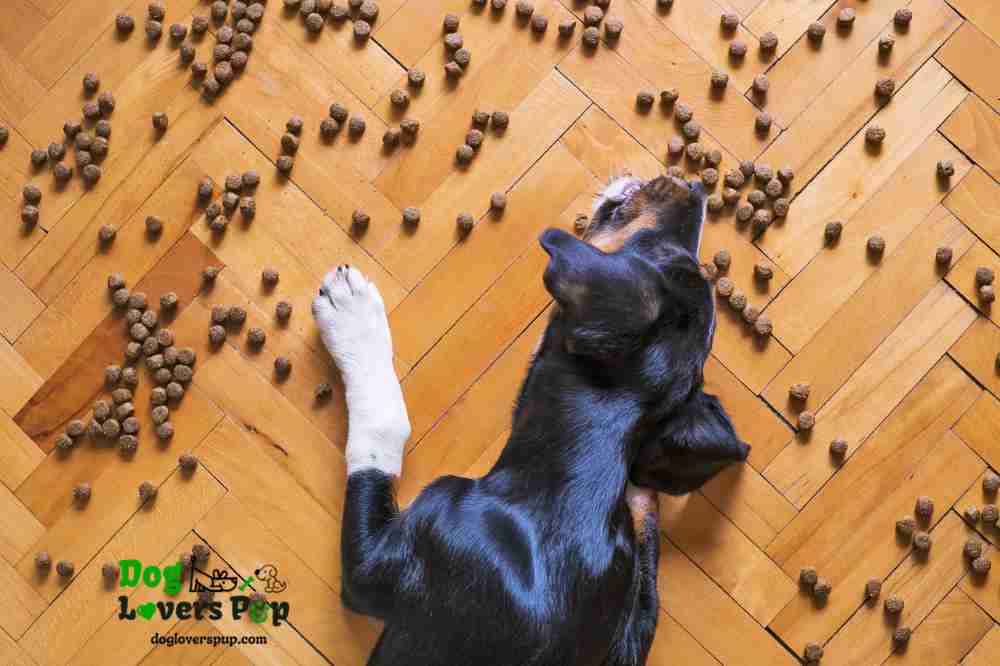
These are some of the most common myths about dog food and nutrition:
– You should only feed your dog premium brands of food in order to ensure they’re getting the best nutrition
– Dogs only need meat in their diet and should never eat carbohydrates or vegetables
– All processed foods are bad for dogs and they should only eat fresh, unprocessed foods
– Senior dogs don’t need special food and can eat the same diet as adult dogs
– You can tell if your dog is getting the right amount of nutrients by checking its stool
– A raw diet is always better for dogs than any other type of diet
– Puppies should be fed puppy food until they’re a year old
– Dogs only need to eat when they’re hungry and can’t overindulge
– You should only feed your dog dry kibble
– All dogs should eat a raw diet
– Dogs only need one meal per day
– I can’t feed my dog anything I’m eating, it will make them sick
These are some of the most common myths about dog food and nutrition. For more information, please consult with your veterinarian. They will be able to help you create a diet plan that is perfect for your pup!
Final Thoughts on Dog's Nutrition
Dogs are one of the most popular pets around the globe and are known as “man’s best friend” for a reason. They are loyal, loving, and make great companions. As a responsible pet owner, it is important to make sure your dog gets the proper nutrition. A nutritious diet is important for maintaining your dog’s health and fitness.
While there are many commercial dog foods on the market, it’s important to read the labels and make sure that the food you choose meets your dog’s nutritional needs. You can also create a homemade diet for your pup by incorporating fresh fruits, vegetables, and meats into their meals.
Be mindful of how much protein or fat your dog consumes, as too much of either can be harmful. And don’t forget about water! Dogs need plenty of fresh water to stay hydrated and healthy.
We hope you enjoyed this guide to dog food and nutrition! By following these tips, you can help ensure that your furry friend lives a long and happy life.
Disclaimer: This article doesn’t intend to replace professional veterinary advice, nor should it be used as a substitute for veterinary services, diagnosis, or treatment. The content on this website, including information and opinions expressed herein, are intended for general informational purposes only. In case you have concerns or questions regarding your dog’s health and diet requirements, please consult your veterinarian before doing anything that might affect it.
DogLoversPup.com and the writer are not responsible or liable for any damage, liability, costs, or claims arising from any possible consequences of the reader’s action after reading this article.
